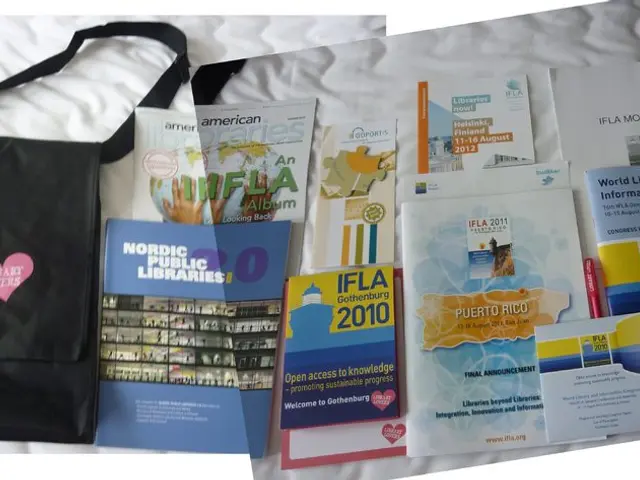Design Fonts: Understanding Their Nature and Choosing the Suitable Option for Your Project
In the realm of web design and visual communication, ensuring accessibility is paramount. One of the key guidelines comes from the Web Content Accessibility Guidelines (WCAG), which recommends allowing users to zoom in and make text 200% larger. However, this recommendation applies primarily to websites, not visual communication tools like infographics, reports, and brochures.
When it comes to designing lengthy, multi-page documents, maintaining minimum readable type sizes is crucial. Accessible fonts should be easy to see, read, and understand for all people, without making content more difficult, slowing the reader down, or making it hard to distinguish one letter from another.
Popular fonts suitable for accessibility concerns include Helvetica, Calibri, Arial, Times New Roman, Tahoma, Museo Slab, Source Sans Pro, Rockwell, and Roboto Slab. Sans serif fonts, in particular, have been shown to increase reading performance among people with dyslexia, while italic fonts decrease readability.
Simpler icons are also recommended for accessible designs, as complex or detailed icons can become a distraction for readers with impairments. Larger font sizes in visual communications contribute to more engaging content for all readers.
WCAG covers far more than font choice or size, including the use of colours, colour contrast, the page’s structure, and more. Using a single font or as few fonts as possible can help readers with accessibility issues process information more easily.
For people with dyslexia, a dyslexia-friendly typeface is recommended. Such fonts generally have characteristics like distinct letter shapes and increased spacing to improve readability. Helvetica, Courier, Arial, Verdana, and CMU (Computer Modern Unicode) are some good fonts for this purpose.
It's important to avoid fonts with misleading shapes or characters that could be mistaken for others. The Americans With Disabilities Act (ADA) does not explicitly spell out font sizes it deems to be compliant, but some accepted standards in web design suggest a starting point of 16px and not going below 12px.
Our platform creates templates that are accessible and easy to edit, making it simple for non-designers to create visual materials that cater to everyone. It's possible to use smaller font sizes for body text in visual communications, as long as the fonts are accessible and the principles of accessible design are applied.
There is no evidence that dyslexia fonts make dyslexic people read faster, but many people with dyslexia find the added features of these fonts helpful. It's crucial to remember that accessibility is about creating designs that are usable by as many people as possible, regardless of their abilities.
Read also:
- Cybertruck's Disappointing Setback, Musk's New Policy, Mega-Pack Triumphs, Model Y's Anticipated Upgrade Prior to Refresh (Week of January 25 for Tesla)
- Haval H6 Hybrid Analysis: Delving into Engine Performance and Fuel Efficiency
- Tesla broadens its Indian footprint with a new showroom and Supercharger establishment
- Vans returning, allegedly?






